Master the Best Time to Fish: Light Tackle Tips for Beach and Rock Anglers
Figuring out the best time to go fishing on the beach or rocky shores can feel a little daunting at first, especially when you're just starting out with lures and soft plastics on light tackle. Trust me, it’s not just a matter of casting and hoping for the best. Over the years, I’ve learned that success often comes down to timing and reading the conditions around you. Knowing when to fish can mean the difference between an unforgettable session and going home empty-handed. To help you stack the odds in your favor, we’ll explore key factors like the fishing time of day, moon phases, and how tides and currents play into it all. These aren’t just quirks of nature; they’re powerful tools for anyone looking to refine their shoreline fishing techniques. And don’t forget fishing weather conditions, as they can truly make or break a trip. By understanding these elements, you’ll not only boost your results but enjoy the process of learning to read the shoreline for fishing.
This guide is packed with light tackle fishing tips designed for beginners and beyond, helping you figure out the sweet spots and times to get hooked on beach fishing. Let's get started!
How the Time of Day Impacts Fish Activity for Beach Fishing Beginners
Time of day plays a huge role in beach and rock fishing. Understanding fish activity during different parts of the day can be the difference between a productive outing and a quiet one. Here’s a closer look at the best times to go fishing on the beach, so you can plan your trips effectively.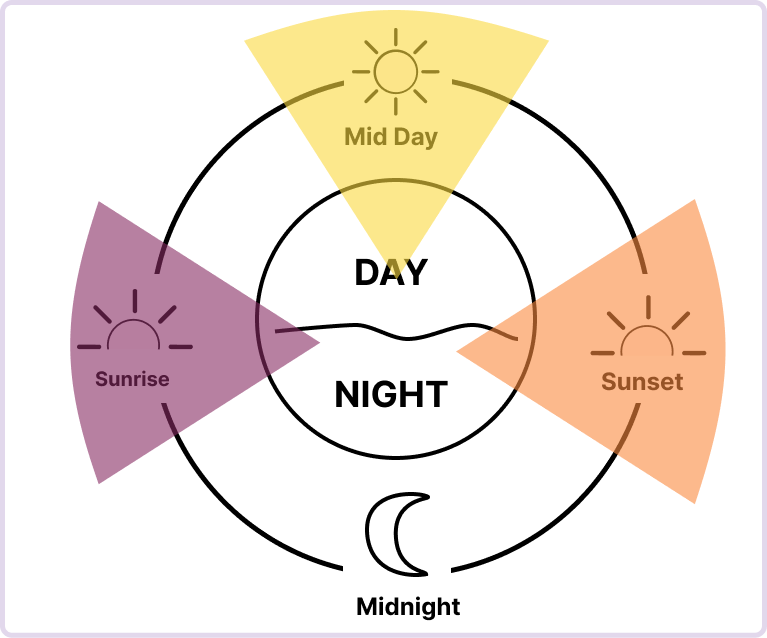
The 3 Best Times to Fish – Ranked and Justified
- Sunrise
Mornings slightly edge out as the best time to fish. At sunrise, the water temperature is cooler, and fish are most alert, eager to feed after resting overnight. Predatory fish often follow baitfish closer to the shallows during dawn, making it prime time for casting with light tackle fishing strategies. If you're into reading the shoreline for fishing, this quiet part of the day is perfect for spotting subtle signs of fish activity, like ripples or baitfish breaking the surface.
- Sunset
The evening offers excellent fishing opportunities, as fish prepare for nightfall by hunting one last time. Much like morning, the cooler temperatures trigger feeding behaviors. Sunset fishing pairs well with fishing weather conditions that include calm waters, and you might even catch species like mackerel or snapper closer to shore. Use adaptable shoreline fishing techniques during this time for the best results.
- Midday
While generally less active than dawn or dusk, midday fishing can still be productive, especially if you're targeting specific species, like tuna. Under a bright sun, visibility improves, making it easier to spot fish cruising through the water. Strong fishing currents and tides can also boost midday activity by stirring up bait, even when the sun is high. For beginners, this time is ideal for putting light tackle fishing tips into practice and testing patience.
Sunrise, sunset, or midday, each time has its own advantages depending on the species and conditions. By focusing on these windows and paying attention to external variables like fishing moon phases and tides or weather patterns, you’ll improve your odds dramatically. Time your trips right, and you'll be swapping fishing stories with confidence in no time.
The Science Behind Moon Phases and the Best Time to Go Fishing

When it comes to fishing, the moon holds more power than you might think. Its gravitational pull influences tides, currents, and, ultimately, fish behavior. Over the years, I’ve learned to put serious thought into moon phases when planning a fishing trip. Whether you’re brand new or a seasoned angler, understanding this can make or break your catch rate.
The Best Fishing Times by Moon Phase
- New Moon (Top Choice)
From my experience, the new moon is absolutely golden for fishing. The three days before, the day of, and the two days after offer the most action-packed fishing windows. Why? During the new moon, nights are pitch black, so fish are less likely to feed heavily. This makes them ravenous as the sun comes up. Combine this hunger with bigger tides (thanks to the gravitational alignment of the moon and sun), and you’ve got fish chasing and attacking lures like there’s no tomorrow. For me, planning trips around the new moon has resulted in outstanding bites and some of my most successful outings.
- Full Moon (A Solid Runner-Up)
The full moon has its own charm, but I don’t rank it quite as high as the new moon. While full moons bring about similarly strong tides, fish often feed extensively during bright moonlit nights. By the time morning rolls around, they’re not as aggressive. Still, the four-day window leading to the full moon and the full moon itself can produce great results. This period is all about timing and adaptability. Trust me, though, you’ll notice the difference in how fish strike during this phase compared to the new moon.
- Between Moon Phases
Fishing during these transitional phases is what I’d call a mixed bag. Tides are smaller, currents less dynamic, and fish behaviour more relaxed. You can definitely land a catch, but it often requires more finesse and skill. Fish are hesitant, with half-hearted strikes, which means you’ll need to focus more on your light tackle fishing strategies. On the plus side, it’s an excellent time to hone your shoreline fishing techniques and challenge yourself as an angler.
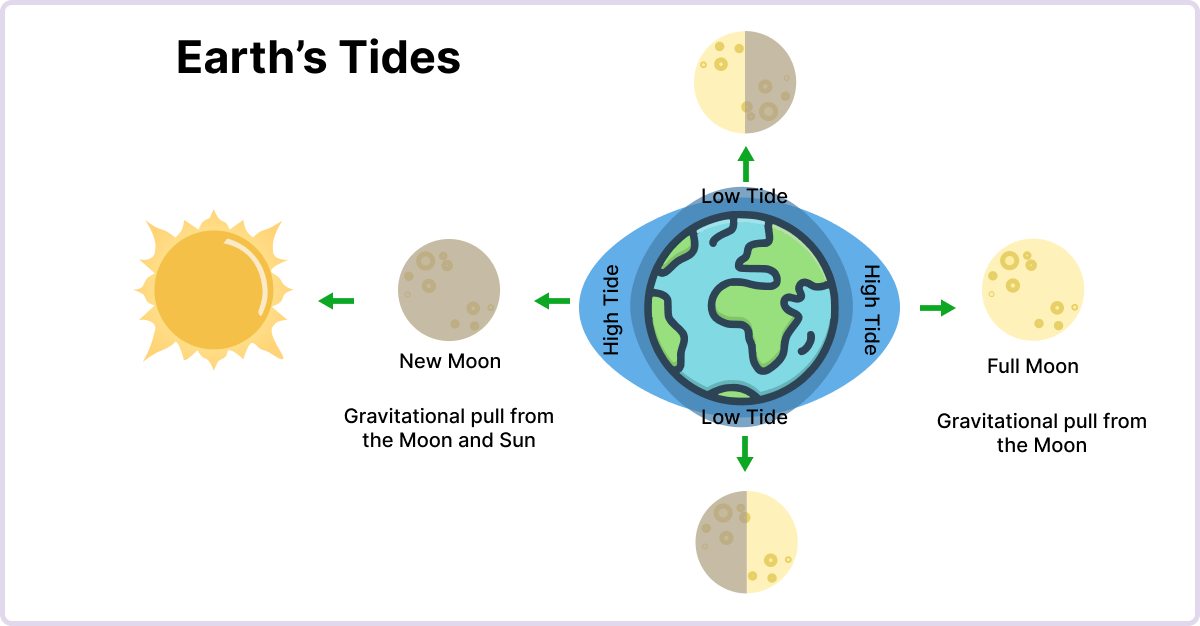
No matter the moon phase, fishing is always a blend of science, skill, and patience. But mastering how the moon influences fishing currents and tides can set you apart. Time it right, and you’ll be amazed at what’s waiting for you out there!
How Tides Influence the Best Time to Go Fishing
The tides are a fisherman’s best friend or worst enemy, depending on how well you understand them. Whether you’re fishing from the rocks or the beach, knowing how tides impact fish behavior can transform a slow day into a success story. Over the years, I’ve learned to adapt my approach to suit the tidal phases, and I’m here to share some practical tips that will help you fish smarter, especially if you’re just starting out.
What Happens During High and Low Tides?
High Tide
At high tide, water rushes in and covers previously exposed areas, bringing fish closer to the shore or the rocks. This movement offers fish new feeding opportunities as baitfish seek refuge in the rising waters. From the rocks, high tide is golden for targeting pelagic species like mackerel. These fish often cruise closer to land, using the deeper water access to ambush prey. During this time, less effort is required for casting, as the fish might be just a few meters from your position.
Low Tide
Low tide, on the other hand, reveals the structure of the terrain underwater. Sandbars, gutters, and holes become visible, helping you understand where fish might be hiding when the water rises again. On the beach, low tide can also concentrate fish into smaller areas, making them easier to target with the right presentation. For example, I like to take a walk during low tide to map out the perfect spots for later high-tide sessions.
Best Tides for Beach Fishing and Rock Fishing
Beach Fishing

When fishing from the beach, I usually prefer the low tide transitioning into the incoming tide. Here’s why. At low tide, I can identify gutters, troughs, and sandbanks where fish are likely to gather as the water rises. Once the tide starts coming in, predatory fish like whiting, flathead, and bream follow baitfish into the gutters. This is when your light tackle fishing strategies really shine. I always cast along the edges of the gutters, where fish tend to patrol for food.
Rock Fishing

For rock fishing, high tide is often the best time. Bigger fish, like tuna or kingfish, move in close to the rocks, hunting in schools near the surging water. Strong currents created during high tide help push baitfish towards rocky ledges, and predators are quick to follow. With high tide, I always emphasize fishing weather conditions, ensuring safety since waves and surges can be unpredictable around rocks.
How Tides Enhance Pelagic Fish Activity
Pelagic fish, like tuna and mackerel, thrive in currents created by strong tidal movements. High tides, particularly around mid-cycle when water flow is at its strongest, are ideal for targeting these species. Here’s the thing I’ve noticed over the years: no current equals no fish. Fish use currents to conserve their energy, lurking in calmer spots while waiting for food to be carried to them. This is why fishing currents and tides are critical for understanding when and where to cast.
Tips for Beginner Fishermen
Scout During Low Tide
If you're planning a trip, start by visiting the beach during low tide. Use this opportunity to read the shoreline for fishing and make mental notes (or take photos) of where the gutters, troughs, and channels are located. These areas will become feeding highways once the tide comes back in.
Be Tidal-Cycle Aware
Understand the rule of twelfths. Tidal flow increases in the third and fourth hours of the cycle, creating strong currents that spark activity. Plan your fishing trips around these periods for the best results.
Adapt to Your Spot
Fishing success depends on your location and the conditions. Beaches often produce better results during the incoming tide, while rocks shine during a high or falling tide. Adapt to the setting and observe how tides affect the water movement.
Stay Safe
If you’re fishing from rocks, monitor the changing tide and watch for incoming waves. Rising tides can make areas quickly unsafe, so keep an eye on the water and your surroundings.
Tides are as much about contrast as they are about timing. Small tidal changes during slack tides rarely stir up enough action, but larger high-low swings during a full or new moon can create dynamic feeding opportunities. By paying attention to these cycles, using the best shoreline fishing techniques, and targeting strong currents, you’ll find that timing your session to the tides makes all the difference. It’s not just about luck; it’s about working with nature.
Reading the Shoreline for Fishing: Spotting Sandbars, Gutters, and Drains
One of the most crucial fishing skills, especially when using light tackle and lures, is the ability to read the water. You might look out at a beach or rocky shoreline and see nothing but waves and foam, but hidden beneath lies the structure where fish hunt. Sandbars, gutters, and drains play a huge role in determining where fish will gather. Here’s how you can interpret these features to maximize your catch.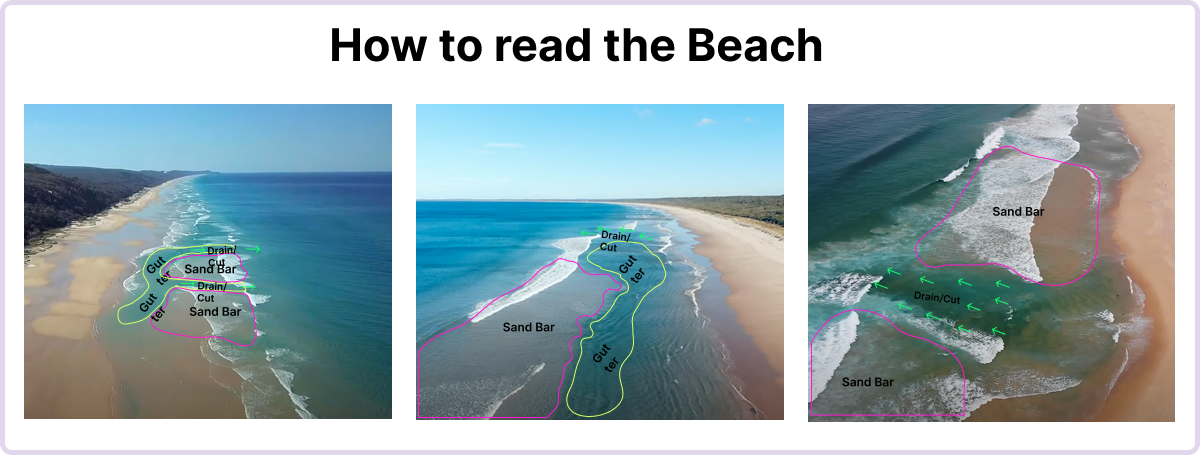
How to Spot Sandbars, Gutters, and Drains
Sandbars
Sandbars are the underwater ridges where waves break first. When you’re at the beach, look for waves cresting in one spot repeatedly, forming white water far from shore. That’s likely a sandbar. Past this bar lies deeper water, often called a gutter or trough. Sandbars are essential because predatory fish patrol their edges, ambushing baitfish as they move into the deeper waters. If you’re casting from the beach, aim for spots just behind the sandbar where fish often lie in wait.
Gutters (Troughs)
The dark, calm strips of water between sandbars are known as gutters or troughs. They’re easy to spot during low tide or from a higher vantage point. These channels are like underwater highways where baitfish travel, making them prime hunting grounds for bigger predators. When I head to the beach, I keep an eye out for these darker patches that appear calmer amongst the breaking waves. Pair this knowledge with your light tackle fishing strategies, and you’ll understand why gutters are often the most productive spots to cast your lure or soft plastics.
Drains and Cuts
Drains or cuts are channels where water funnels back out to sea, often creating strong rip currents. Just like gutters, they act as hotspots for fish activity. These drains carry a concentration of bait from the shallow waters back into the ocean, making them irresistible to predatory species like bream and flathead. Spotting a drain can be tricky, but on close observation, you’ll notice rip currents that flow seaward in straight or slightly curved patterns. Cast near the edges of these currents to avoid snagging debris and to target fish waiting for food to drift past.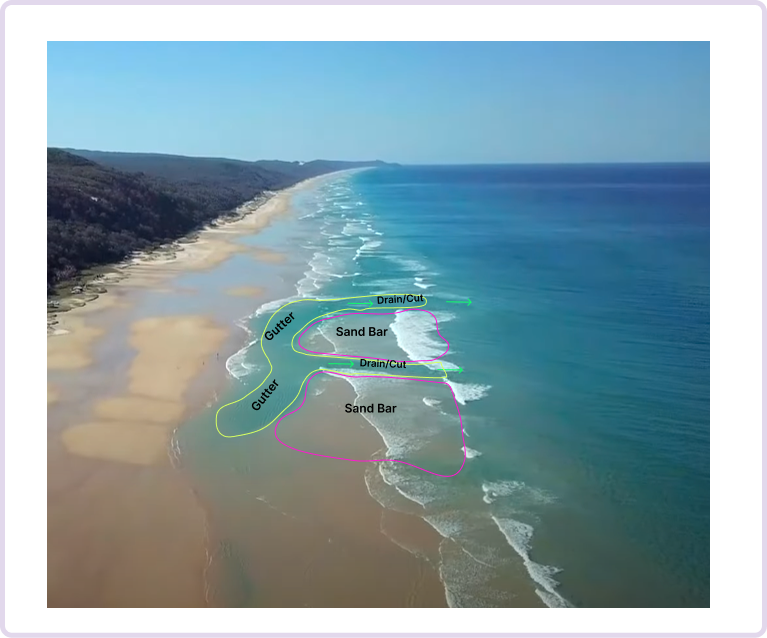
Tips for Beginner Fishermen on Finding Fish in Currents
Understand Currents
Currents are natural fish magnets. Think of them as conveyor belts carrying food directly to predators. Whether you’re fishing from the beach, rocks, or an island, always look for moving water. For example, on a beach, a strong outgoing current from a gutter acts like a buffet line, concentrating bait and predatory fish in one place.
Know Where to Cast
Start by targeting the edges of the structure. For sandbars, cast just beyond where the waves crest or into the calmer water behind them. For gutters, fish along their darker, deeper strip. And for drains, cast along the edges of the current but avoid dropping your lure directly into the strongest flow where snagging is more common.
Scout at Low Tide
Low tide is the perfect time to “map” the beach. Grab a bit of time to see where the sandbars, gutters, and cuts truly lie, then pick reference points like rocks or trees to mark those areas. When the tide rises and covers everything, you’ll know exactly where to fish.
Adapt to Conditions
Every beach setup is unique, and changes in fishing weather conditions or tidal phases can shift fish behaviour. Use an agile approach and experiment with different spots. If the current flow changes or a gutter seems inactive, don’t hesitate to try elsewhere.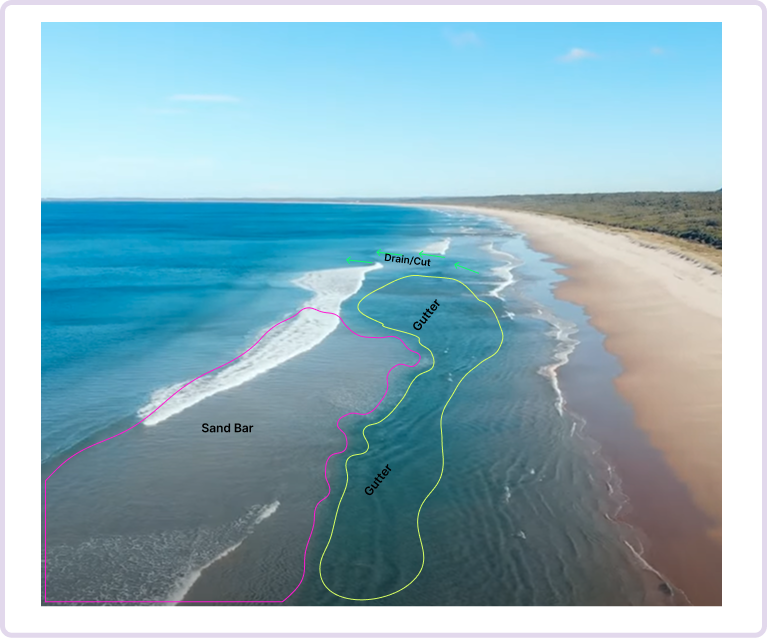
Why Reading the Water Matters
Fish don’t randomly swim everywhere. They follow these underwater roadways for shelter and food. By learning to identify sandbars, gutters, and drains, you’re effectively pinpointing where they’re most likely to feed. And this isn’t just about improving your odds; it’s about fishing smarter. If you’re a beginner, trust me, this skill will save you countless frustrating hours on the water.
Whether you’re planning your next session based on fishing moon phases and tides or experimenting with shoreline fishing techniques, understanding the water’s structure is your ultimate advantage. With practice, reading the water becomes second nature, and your fishing will reap the rewards.
Light Tackle Fishing Tips for Targeting Fish in Changing Conditions
Understanding the combination of time of day, moon phases, tides, currents, and shoreline features is the foundation of successful light tackle fishing with lures. It’s not just about casting your line and hoping for the best. Knowing the best time to go fishing on the beach, from sunrise to sunset, aligns you with fish activity. Leaning into fishing moon phases and tides helps you pick days when fish are most likely to feed. Currents act like fish highways, while reading the shoreline for fishing reveals sandbars, gutters, and cuts where fish congregate.
For beach fishing beginners, this preparation transforms frustration into rewarding sessions. Combine these strategies with an awareness of fishing weather conditions, and you’re set to take your light tackle skills to the next level. Fishing smart is fishing right. With practice, these light tackle fishing strategies will have you reeling in success trip after trip!




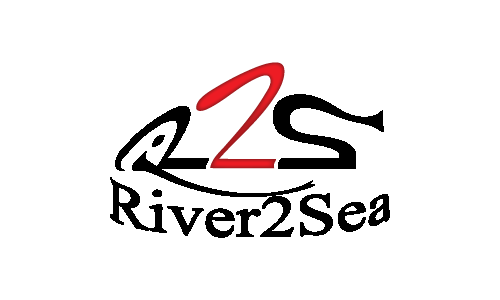


.png)


 1.png)
 1.png)





.png)
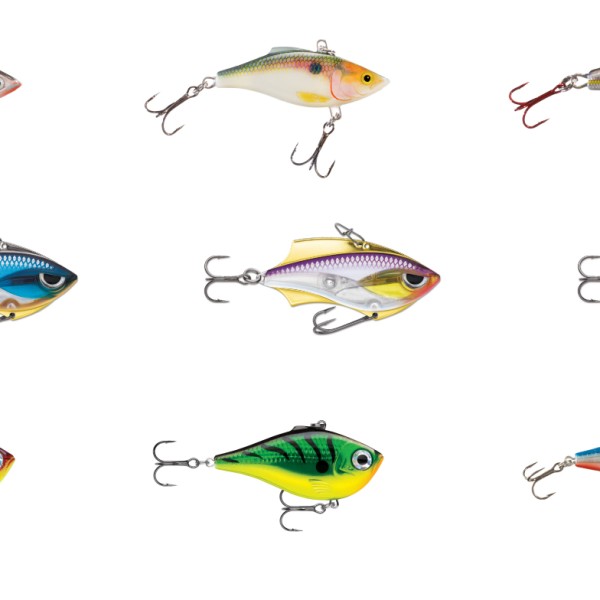
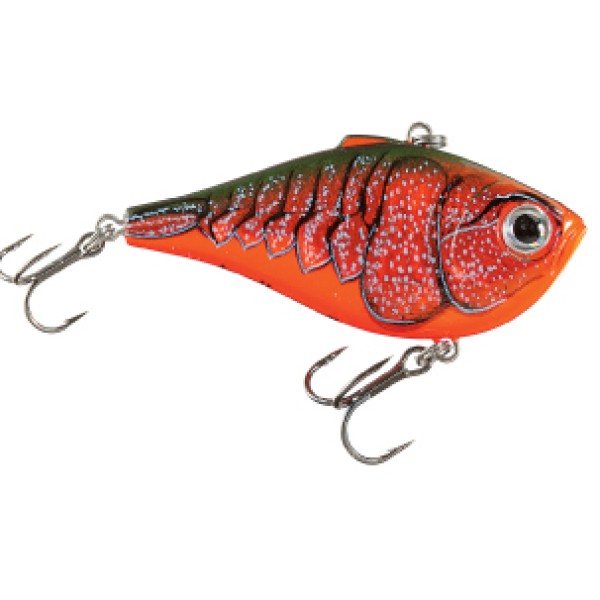
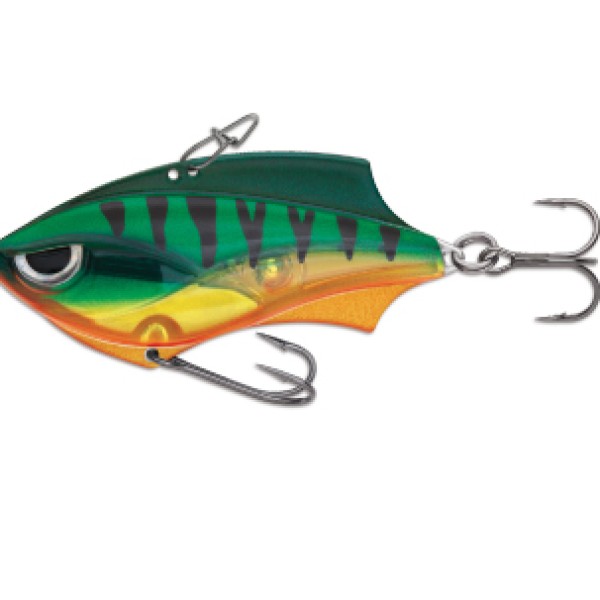
 Newsletter
Newsletter

